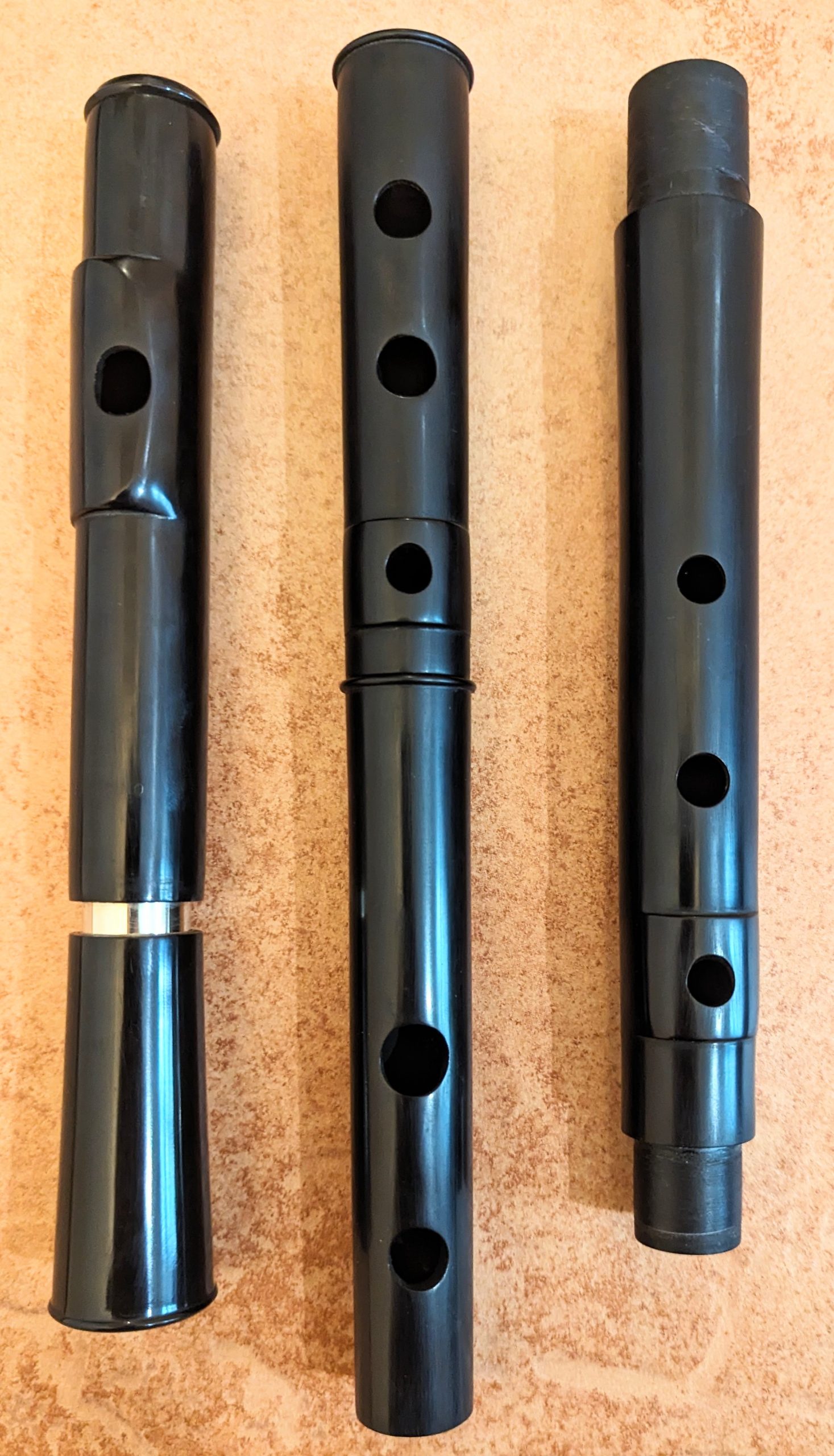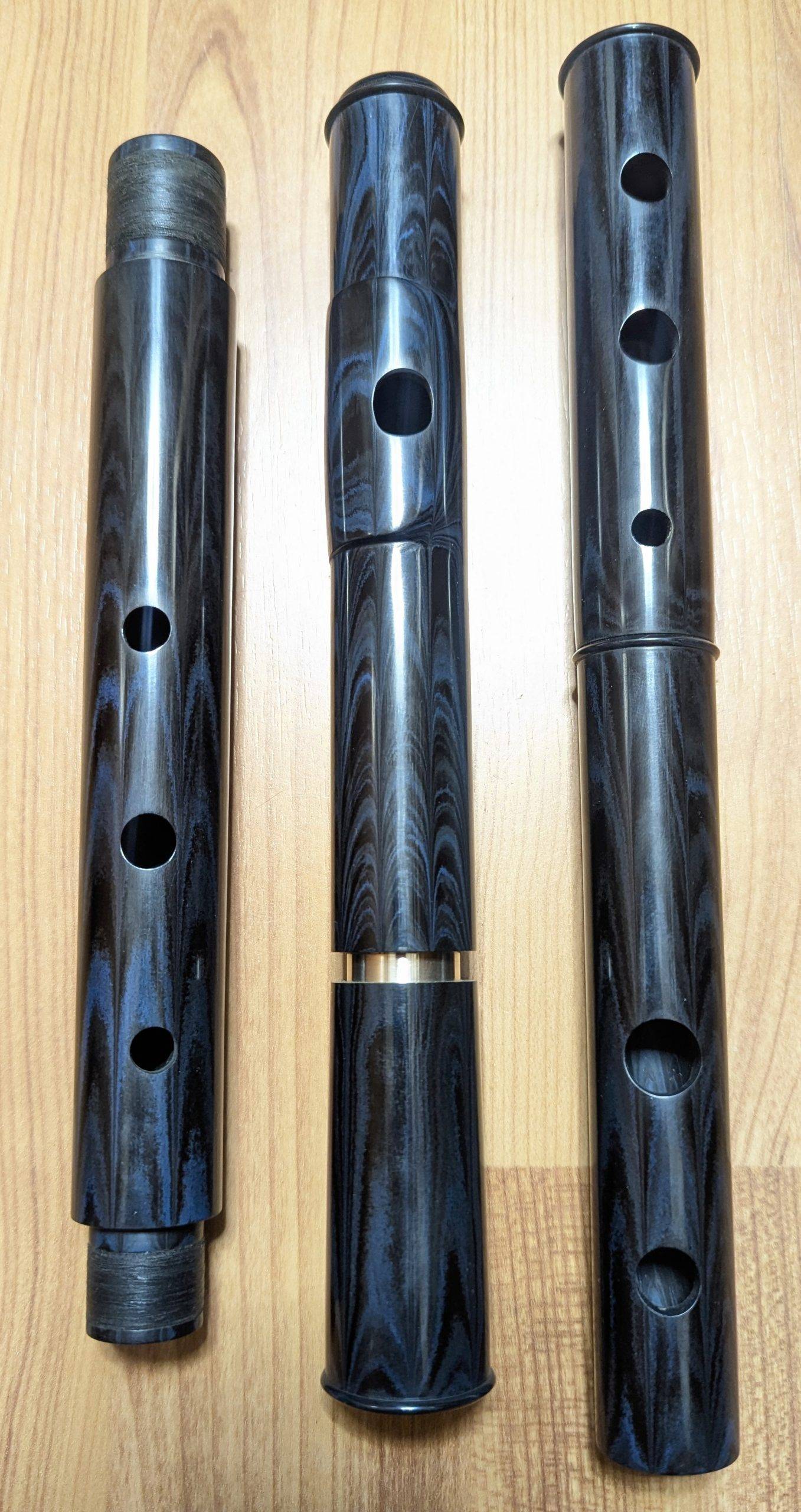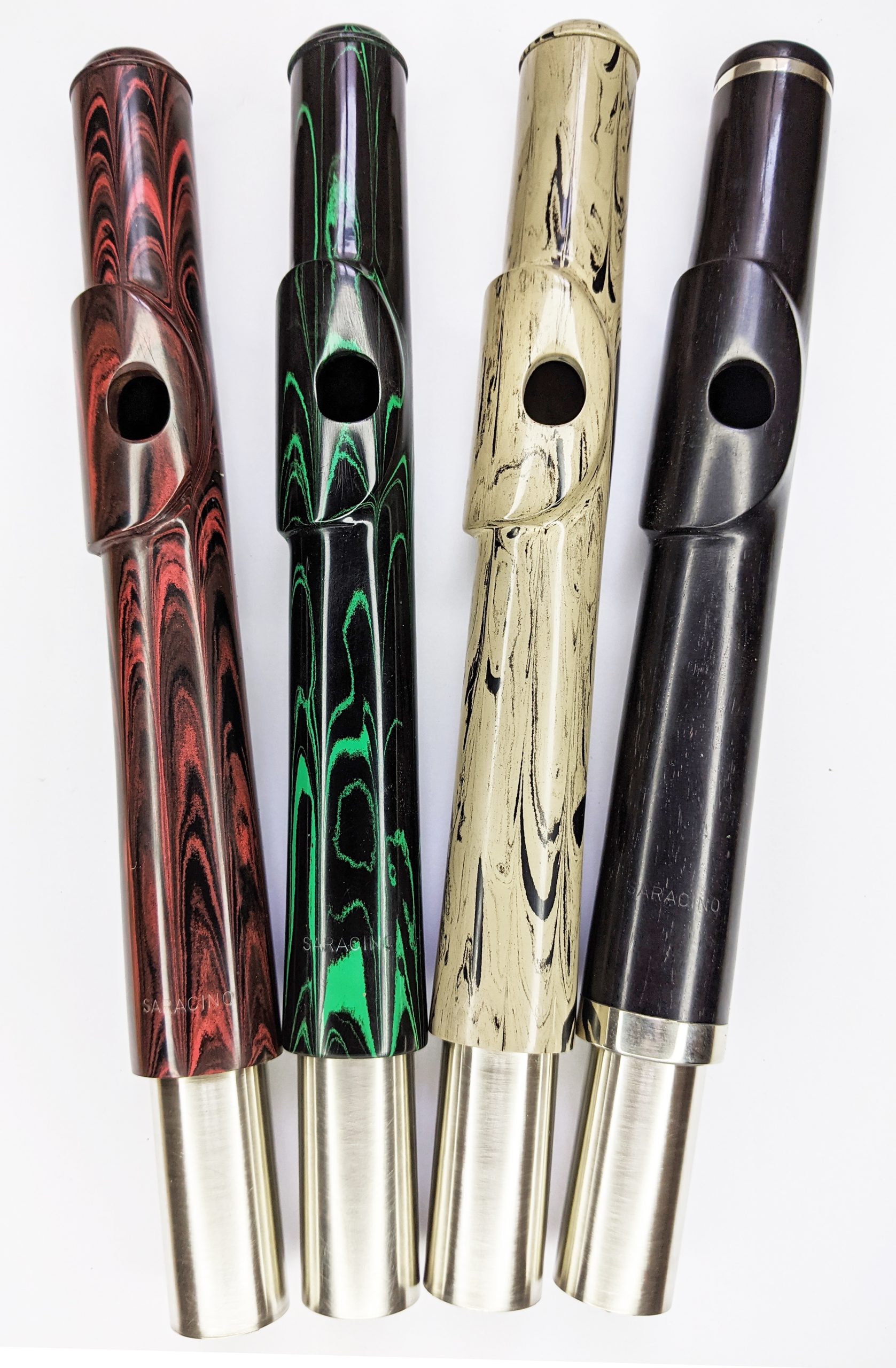Irish flutes
Introducing the new Irish flute, a unique blend of tradition and innovation.
Crafted from high-quality natural ebonite, this instrument captures the rich tonal qualities of wood while offering its own unique character, featuring a number of modern advancements in the headjoint and tone hole design to bring the traditional sound to the next level of performance.
Key Features:
- The modern headjoint design optimizes airflow, resulting in improved responsiveness and easy playability.
It requires minimal breath, allowing musicians to play effortlessly even during extended sessions, but can also be pushed for a more aggressive style of playing.
- It's exceptionally loud, making it a standout choice for live performances and sessions where projection is essential.
- Wide dynamics: musicians will appreciate the instrument's wide dynamic range, from delicate and nuanced melodies to powerful, expressive passages.
- Lightweight: this flute only weights about 250 grams, and the half-lined headjoint makes it ideally balanced and comfortable to hold for extended periods.
- The optional raised 3rd and 6th tone holes allow for an ergonomic placement that ensures easy finger reach for a seamless playing experience. Alternatively, the finger spacing can be kept standard and the two holes made larger for a louder and more uniform volume between the notes.
The bore of the body has a complex shape with multiple tapers that is based on a large number of antique and modern samples. The tone holes are individually undercut to ensure optimal tuning and response.
Size wise, it´s comparable to late Rudall & Rose/Carte style flutes but with somewhat larger holes that are closer to Pratten style flutes.

Why a modern headjoint on an Irish flute?
In the last century, the Boehm flute world has brought numerous developments to elevate performance while also striving to maintain richness in tone and “depth”. Superficially, today’s Boehm headjoints may appear somewhat uniform, but there is a wide variety of small differences in details between brands and models that make them sound and feel very distinct from one another, especially in the hands of an advanced or professional player.
Many of these developments can be applied to the headjoint of simple system conical “Irish” flutes. This goes well beyond the elliptical vs. square embouchure hole shape debate! Details like chimney depth, undercut, overcut, surface slope, edge, tube thickness etc. can be equally or even more important and have a dramatic effect on tone and response. Headjoints that are largely based on historical flutes (from brands like Rudall, Pratten, and others) explore only a limited range of these parameters, but the possibilities are endless.
What about the traditional sound we all love? Players are largely responsible for that, and a good flute and headjoint enable them to achieve the desired tone in the most effortless way possible. My headjoints aim to do just that, with a focus on achieving a strong, thick and resonating sound with a wide dynamic range, adopting modern solutions to improve performance while also allowing players to have the flexibility to express themselves freely with their chosen approach and style.
Flutes for small hands
Thanks to the innovative raised 3rd and 6th tone holes, I was able to develop an Irish flute for people with small hands (or arthritis etc) without sacrificing tuning, volume or tone quality. This model is also suitable for players that are used to the finger stretch of Boehm flutes.
The picture compares side by side the difference with an Irish flute with typical hole placement.

The stopper
After experimenting with many different materials, I´ve settled with a wooden stopper (Grenadilla or Mopane), which is kept in place with an O-ring. This approach was inspired by the work of flute maker and historian Robert Bigio. This is a modern concept that works very well and the O-ring can be easily replaced if damaged. The stopper doesn´t have a screw mechanism but can be pushed up and down with a rod. The reduced area of contact with the headjoint wall and the empty space between the stopper also helps providing extra resonance.
Colored ebonite
The color of the material can be customized by the ebonite manufacturer which can result in a very personal and unique looking flute.
You can write me for the catalogue with the available options. Please keep in mind that there can be inconsistencies and variations in the color pattern that occur in the production, but that´s part of the charm that will make each flute one of a kind!


Prices 2024:
- Black ebonite flute (regular or raised holes) with brass slide: 890 euro
- Colored ebonite: about +200 euro (please inquire for options)
- Stainless steel tuning slide: +20 euro
- Silver tuning slide: +100 euro
- Flute case: currently unavailable
- Tracked shipping to Europe: 20 euro
- Tracked shipping worldwide: 35-50 euro (please inquire)
Please check the ordering menu for payment options.
